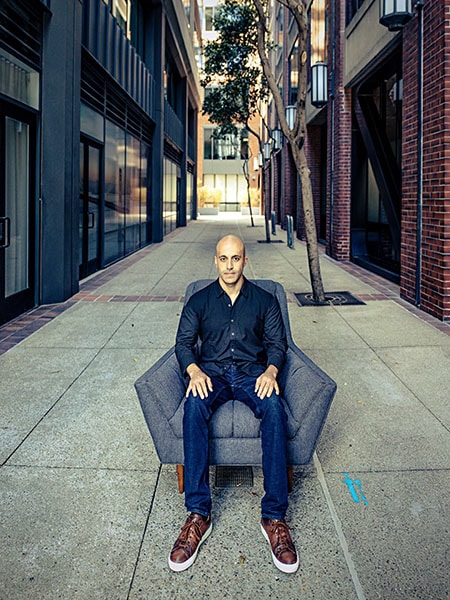
He wanted make his revolutionary code free. But Ali Ghodsi is now a billionaire with a $28 billion startup
Ali Ghodsi was happily researching AI at Berkeley when he helped invent a revolutionary bit of code—and he wanted to give it away for free. But few would take it unless he charged for it. Now his startup is worth $28 billion, and the career academic is a billionaire with a reputation as one of the best CEOs in the Valley
 Ali Ghodsi, CEO of Databricks
Ali Ghodsi, CEO of Databricks
Inside a 13th-floor boardroom in downtown San Francisco, the atmosphere was tense. It was November 2015, and Databricks, a two-year-old software company started by a group of seven Berkeley researchers, was long on buzz but short on revenue.
The directors awkwardly broached subjects that had been rehashed time and again. The startup had been trying to raise funds for five months, but venture capitalists (VC) were keeping it at arm’s length, wary of its paltry sales. Seeing no other option, NEA partner Pete Sonsini, an existing investor, raised his hand to save the company with an emergency $30 million injection.
The next order of business: A new boss. Founding CEO Ion Stoica had agreed to step aside and return to his professorship at the University of California, Berkeley. The obvious move was to bring in a seasoned Silicon Valley executive, which is exactly what Databricks’ chief competitor, Snowflake, did twice on its way to a software record $33 billion IPO in September 2020. Instead, at the urging of Stoica and the other co-founders, they chose Ali Ghodsi, the co-founder who was then working as vice president of engineering.
“Some of the rest of the board was naturally like, ‘That doesn’t make any sense: Swap out one founder-professor for another?’” recalls Ben Horowitz, the company’s first VC backer and himself initially sceptical of entrusting the company to a career academic with no experience of running a business. A compromise was reached: Give Ghodsi a one-year trial run.
By Horowitz’s own admission, Ghodsi, 42, bald and clean-shaven, has become the best CEO in Andreessen Horowitz’s portfolio, which spans hundreds of companies. Databricks is already shaping up to be the firm’s best software success thanks to a recent valuation of $28 billion, 110 times larger than when Ghodsi took over. Databricks now boasts more than 5,000 customers, and Forbes estimates that it’s on track to book more than $500 million in revenue in 2021, up from about $275 million last year. It features on Forbes’s latest edition of the AI50, ranked fifth on last year’s Cloud 100 list and could soon be headed for an IPO that ranks among the most lucrative in the history of software. Already, Ghodsi’s magic act has minted at least three billionaire founders—himself, Stoica, 56, and chief technologist Matei Zaharia, 36—all of whom, by Forbes’s estimation, own stakes between 5 percent and 6 percent, worth $1.4 billion or more.
(This story appears in the 30 November, -0001 issue of Forbes India. To visit our Archives, click here.)



 Co-founders of Databricks (standing from left): Arsalan Tavakoli, 37, who leads field engineering; Ion Stoica, 56, executive chairman and the original CEO; Andy Konwinski, 37, vice president of product management; Reynold Xin, 35, chief software architect; Patrick Wendell, 32, vice president of engineering. Sitting, from left: Ali Ghodsi, 42, CEO; Matei Zaharia, 36, chief technologist
Co-founders of Databricks (standing from left): Arsalan Tavakoli, 37, who leads field engineering; Ion Stoica, 56, executive chairman and the original CEO; Andy Konwinski, 37, vice president of product management; Reynold Xin, 35, chief software architect; Patrick Wendell, 32, vice president of engineering. Sitting, from left: Ali Ghodsi, 42, CEO; Matei Zaharia, 36, chief technologist




